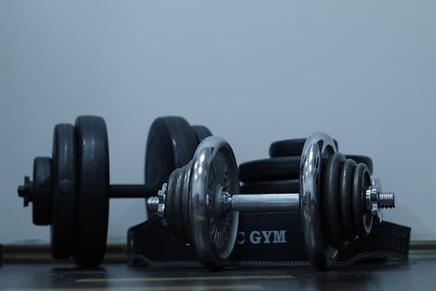If you’ve ever been to a workout in a gym, you may have come across and used dumbells for your strength training. You may also have a set of dumbells in your home or workplace. But how do you use them properly, and what are the benefits? This guide will answer all your questions about dumbbells so you can start using them for a more effective workout.
Warm Up for Dumbells
You should always remember to warm up before working out with dumbells. This is because if you start working out when your muscles are still cold, you’re more likely to get injuries. How do you warm up? You can take a short walk. Alternatively, you can engage in an aerobic exercise for at least 10 minutes in order to warm up your muscles in preparation for working out with dumbells.
Always Complete a Single Dumbells Set and Use the Correct Weight
These small bars are designed to fit in your hands when working out. They are fitted with equal weights on both ends. Dumbbells can weigh from as little as 2 pounds and can go up to 100 pounds and above.
Choosing a weight that will make your muscles exhausted by the time you click 12 or 15 repetitions will give you the same benefits in building your muscles as doing a set of three in total. But supposing you easily do 12 to 15 repetitions and you feel like you still want to go some more? Whoa! That weight is too light for you. The fact is that you should barely do the last repetition. Also, remember that resting is as important as lifting the dumbbells. If you notice a feeling of soreness, your body is telling you to rest. For each of your muscle group, give a day’s rest between workouts.
Dumbells are Good for Boosting your Strength
Experts recommend that adults should get strength training for at least 2 days in a week. This requires using weights in order to build and maintain strong muscles. When doing weight training, you’re working against gravity when lifting or moving dumbells to different positions. In addition to boosting your strength and building muscles, strength training will also raise your heart rates thereby helping you burn calories.
Dumbells may sound easy to use because you need to pick and lift them up, ensure you move them around and finally put them back down. However, it is not as simple as it sounds. If you’re just starting up, you should consider having a trained and licensed personal trainer. A professional in fitness is important because they can help you with the following;
- Identify and understand your training limits.
- Get the correct fitness technique and form.
- Identify the correct repetitions that you need for each set of dumbells.
- Come up with the type of fitness exercises that will help you work all your muscles.
Other Benefits of Using Dumbells
There are a number of benefits that you reap from strength training using dumbells. These are the following;
- Improved blood circulation. Dumbells force your body to pump blood stronger thereby enhancing better nutrient and oxygen flow in your body.
- Better sleeping experience. Dumbells improve the quality of your sleep while better sleep quality improves your workout. Win-win.
- Lower risks in health. You get lower risks of stroke, heart attack and cardiovascular disease. You also get a chance to burn fat and thereby lose weight and build lean muscles.
All these benefits can only be optimized by working out correctly. This should also include other considerations such as nutrition and workout consistency.
Conclusion
Like all other good workout activities, dumbells also present some risks such as the tendency of holding your breath. Holding breath for long presents a risk of increasing your blood pressure and therefore developing a hernia. When working out with dumbells, you also risk getting injured. However, these two risks can be prevented by working out correctly, using the services of a professional and working out with the right dumbell









